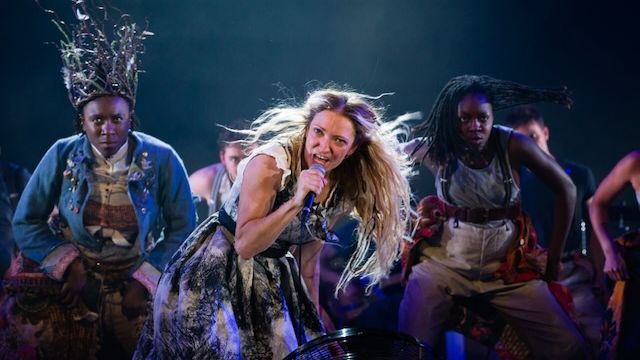Wuthering Heights
The tragic characters of Emily Brontë’s dark novel Wuthering Heights have haunted literature for nearly 180 years. Was it just a bleak gothic romance? Or was it something more? What was Brontë really saying as she juxtaposed love and loss with brutality and revenge?
It was her horror at scenes from refugee camps and the fate of unaccompanied children that sparked Emma Rice’s memories of Wuthering Heights. “Wasn’t Heathcliff an unaccompanied child?” she recalled. Would the fate of today’s unaccompanied children be similar to the cruelty faced when Mr Earnshaw took him home?
To Rice the novel was no longer a romance but a warning, “a tragedy of what might happen if … we allow cruelty to take hold.”
“Be careful what you seed,” she wrote – and that warning became the theme of a very insightful adaptation that brings out the inferences of racial discrimination in Wuthering Heights as well the classism, misogyny … and dark romance.
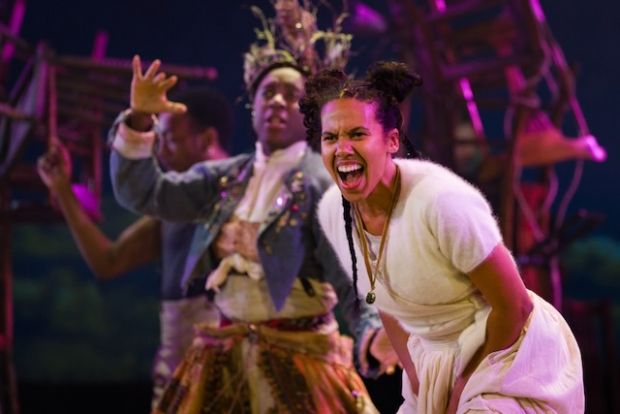
If that suggests that the adaptation is didactic, it isn’t! It’s clever, fast moving, physical, and theatrical. It is storytelling as it’s supposed to be. Storytelling that uses action and interaction, control and connection, timing and judgement, movement and music … and humour.
Storytelling told by eleven multitalented performers and three musicians who personify the characters, all their frailties, the complexities of their relationships, the cruelties they inflict upon each other, their poor health, their loneliness, even the gloomy Yorkshire Moor itself.
Because Emma Rice makes The Moors a character - a Greek chorus that replaces the housekeeper Nellie Dean, who was Brontë’s narrator. Led by the expressive and energetic Nandi Bhebe, The Moors sing, dance and become all the characters but Heathcliff and Catherine. As well, they move props, link scenes, keep the audience up to date with time and place, and remind them who has just passed away! They are as serious, threatening and powerful as the moor, and as physical and energetic as the wind that howls over it.
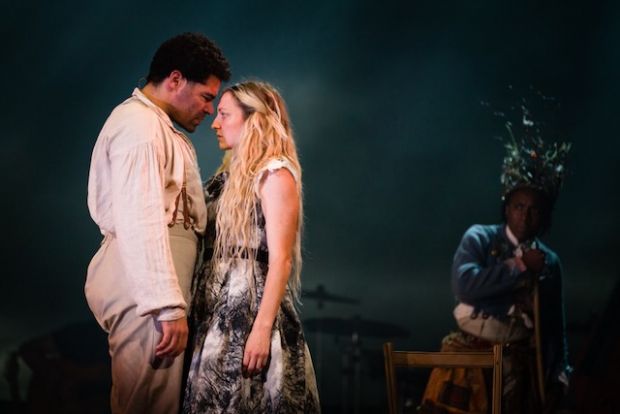
This production is perhaps one of the best pieces of ensemble work we have seen in Sydney for some time. It is pure theatre. Actor based, skilfully directed and pertinently choreographed. There is only one “multi-media” device! And that the huge cyc of the restless Yorkshire sky, across which a murder of crows flies each time one of the Earnshaw/Linton dynasty dies. Everything else is in the action.
The company uses the full width of the stage. The performers are in sight all the time. If they are not acting, dancing, singing, playing an instrument or wheeling symbolic set pieces on or off the stage, they are sitting, in character, waiting, totally involved in every moment. They are not still for long – and they work together with total trust and confidence.
Heathcliff and Catherine are the constants of Wuthering Heights, the opposites that shouldn’t attract. He a sad, hard, vengeful character moulded by mistreatment and exile; she a wispy ‘faery’ of the moors, a temptress torn between love and social position.
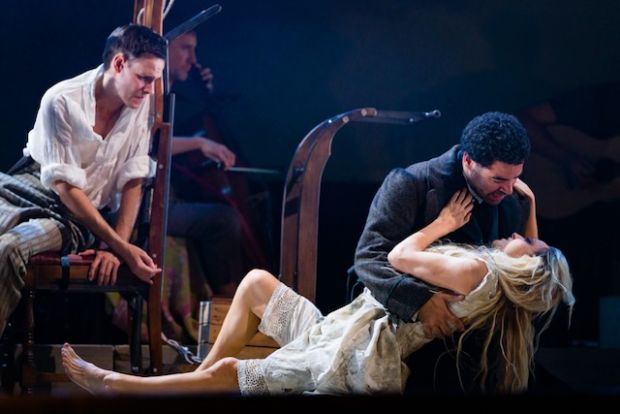
John Leader takes Heathcliff from confused, uneducated “dirty, ragged, black-haired child” to the hard, unforgiving “gentleman” he becomes. Leader is a strong, compelling performer who finds incredible depth and dimension in his portrayal of this moody literary ‘hero’. He shows pain and disdain in the way he stands, his glaring looks and harsh, slowly spoken words. He shows the ingrained memories of his cruel childhood in impenetrable defences and merciless retribution. His Heathcliff revels in the power and control he has striven to attain and the vengeance he intends to exact.
Only with Catherine does he let down his defences, and then momentarily. Leader does not even allow his love for her to weaken his resolve.
Stephanie Hockley finds the little girl in Catherine even in the grown woman. The catch-me-if-you-can, will-o’-the-wisp that is young Catherine is still there in the married Catherine who plays her naive, devoted husband Edgar Linton off against the swarthy, smouldering Heathcliff. Hockley is light and lithe, slipping about the stage as she teases and mocks, ingratiates herself with the Lintons and pines for what she really wants. Her eyes are as expressive as her beautiful voice when she sings of the bluebell “the sweetest flower”. As the spectre of Catherine, who shadows Heathcliff until his own death, she loses the childishness. This ghostly Cathy is shrunken, sad, watchful.
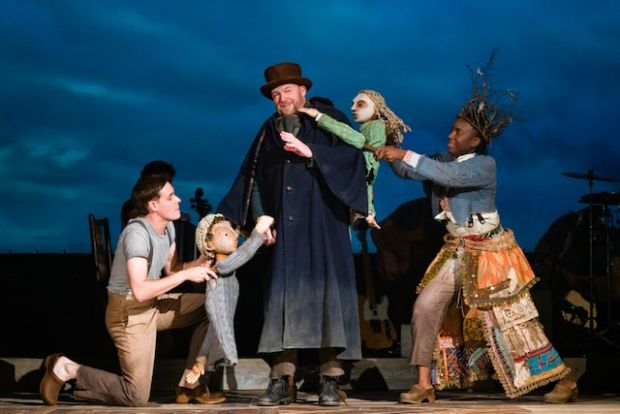
Sam Archer is Lockwood - the new tenant of Thrushcross Grange – and Edgar Linton. A ballet dancer and opera singer, Archer is also a master of comic timing, and it is he who so often breaks the gloom of the story as he fights the windy night at the beginning of the production – or trips lightly across the stage as the guileless Linton.
It is a joy to watch how Rice integrates humour into the production using the multiple skills of performers such as Archer – and to see how the actors relish blending them to bring more colour to the characters.
Mr Earnshaw is played by Tom Fox, who finds the wholesome innocence of the man who ‘rescues’ Heathcliff but is seemingly unaware of how this ‘gift from God’ will be accepted his children. Fox is a seasoned performer whose timing and experience give much to the production. He is expressive, physical, musical – and very funny.
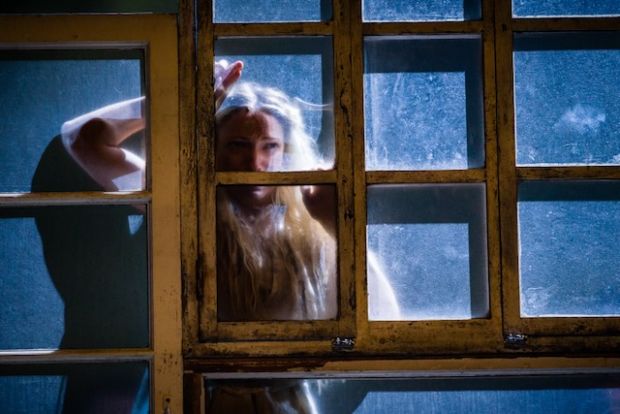
So too is Rebecca Collingwood who plays Isabella Linton, a flighty young woman, easily beguiled by the cunning Heathcliff – and scared away by his violence. But she does give him an heir, Little Linton, who is also played by Collingwood. This character, timid, weedy and whining, Collingwood plays with perfect comic timing and gentle, quirky exaggeration.
Matthew Churcher plays nasty Hindley Earnshaw and the much-neglected Hareton Earnshaw. Churcher is athletic and restrained and holds these characters carefully in control until riled. He makes them tightly strung, conscious of their place and restrictions.
Robyn Sinclair is Hindley Earnshaw’s wife Frances, and later Catherine’s daughter young Cathy, restricted to the grounds of Thrushcross Grange by her protective father. Cathy is cheerful, trusting, optimistic, adventurous – and defiant. Despite her father, she finds Wuthering Heights and Heathcliff … and Little Linton, whom Heathcliff is determined she will marry. Sinclair finds the joy and naivety in the role and is a happy contrast to Linton’s anaemic whingeing.
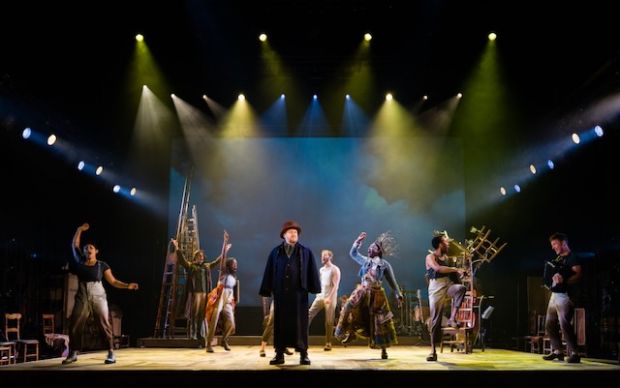
TJ Holmes is Dr Kenneth, who Rice makes another comic lift to the production. Holmes is an actor and musician, who plays the cello when he is not racing onto the stage as the doctor to deliver a bay, declare a death or slip elegantly off the stage sipping from his flask.
Fred Double and Stehanie Elstob are the constant voices behind BheBhe as The Moors. Their voices are pure and strong, they move with grace and energy. With Bhebhe they are the mainstays of The Moors, filling in little bits of information during scene changes, leading dances as Archer, Churcher, Collingwood, Fox, Holmes and Sinclair join them in songs and routines.
The Moors provide a continuity that is more than storytelling. They add comedy, like the chalkboard headstones that they carry on to remind the audience who has died and their place in the dynasty, the cushions that are thrown to Little Linton when he complains of discomfort. They move the strange chairs-on-chairs and house fronts of wheels that suggest the Heights and the Grange. They steady the multi-ladder construction that is Heathcliff’s escape from reality, they assist with costume changes – and all the time they are part of the action, watching, aware.
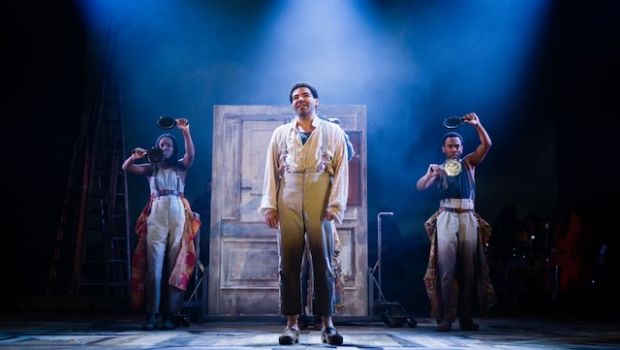
This the second adaptation I have seen in the past few years. Both have been impressive. shake and stir’s production was dark and oppressive, its strong, carefully directed characters framed by flimsy swaying drapes and flickering fires.
Emma Rice’s production uses comedy and music to temper the oppression, and through The Moors accentuates the unsettled, unhealthy, class-based society in which the Brontës lived, much of which is explained in the souvenir program.
Go and see Wuthering Heights if for no other reason than to see a fine example of theatrical storytelling and true ensemble collaboration.
Carol Wimmer
All production images are of the original Bristol Old Vic cast. Photographer: Steve Tanner
Subscribe to our E-Newsletter, buy our latest print edition or find a Performing Arts book at Book Nook.

